 Along with the silos across the street, the Chelsea Clocktower is one of the most prominent and historic landmarks in the city of Chelsea. For over 100 years the Clocktower has been a feature on the Chelsea landscape. This cache recognizes the 100-year anniversary of the Clocktower's construction that was celebrated in 2007. If you are here on the quarter hour, you will hear the Clocktower bells chime.
Along with the silos across the street, the Chelsea Clocktower is one of the most prominent and historic landmarks in the city of Chelsea. For over 100 years the Clocktower has been a feature on the Chelsea landscape. This cache recognizes the 100-year anniversary of the Clocktower's construction that was celebrated in 2007. If you are here on the quarter hour, you will hear the Clocktower bells chime.
In 1890, Frank Porter Glazier (right) and partners created a new company called the Glazier-Strong Oil Stove Company in Chelsea to produced stoves with the trademark Brightest & Best. Several designs of kerosene and gas stoves were made for both cooking and heating purposes. B&B stoves were shipped by railroad throughout the United States and the world.

Glazier eventually bought out his partners and renamed the company the Glazier Stove Company. Two major fires destroyed portions of the growing stove company in 1894 and 1895, resulting in reconstruction and expansion into new buildings. The Glazier Stove Company was expanded on the present site of the Clocktower complex. These fires would play a role in the future construction of the Clocktower.

In 1907 the Glazier Stove Company became the largest oil stove company in the world. It occupied 18 structures within 10 acres (40,469 square meters). Some of the buildings Included on the site were a brass foundry, an iron foundry, a pig iron and coke storage building, and a building for enameling and polishing.
That same year Frank P. Glazier built three ornate facilities fronting the Michigan Central Railroad tracks: The Clocktower with warehouse, Welfare Building, and the Steel Range and Warehouse Building (below left to right). The new Kahn System of Reinforced Concrete, developed by renowned Detroit architect Albert Kahn, was used. Claire Allen of Jackson was the architect and Koch Brothers of Ann Arbor were the builders.
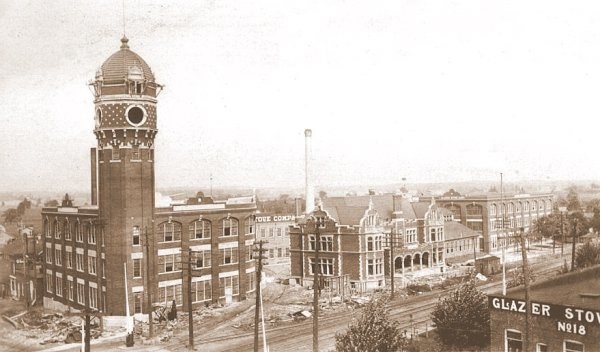
The Clocktower was the crowning point of Frank Glazier's era of power and development. It was the centerpiece of his vision for Chelsea. The three-story Glazier Stove Company late Victorian industrial building with attached seven-story Clocktower provided 60,000 square feet (5,574 square meters) of factory and warehouse space. It contained automatic sprinklers, electric elevators, and modern machinery and appliances.
The Clocktower building was once the tallest structure in Washtenaw County, at 135 feet (41 meters), including a 15-foot (4.6-meter) flagpole. The tower served the dual purpose of holding a 20,000 gallon (76,000 liter) water tank for fires and keeping local town residents punctual. The Clocktower no longer serves as a water tower, but the old water tank is still encased within the tower just below the clock faces.
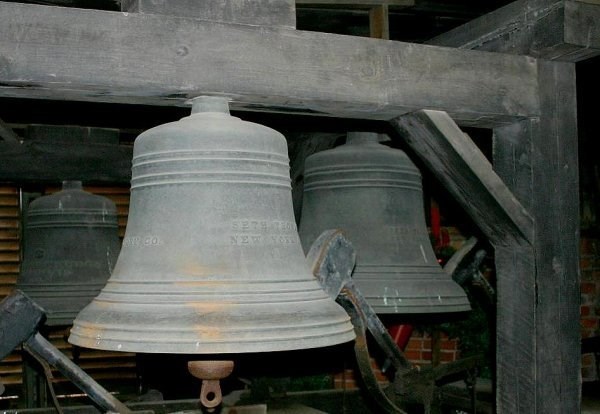 A Seth Thomas Clock Company mechanism with Westminster incremental chimes completed the building in September 1907. Four seven-foot illuminated faces are visible from all directions in the city. The tower contains four bells ranging in size from 300 to 1,250 pounds (136 to 567 kilograms) with a very large hammer for striking the hour. The clock mechanism is now operated by electricity but for many years it was the duty of the Town Marshal to climb the winding stairway and wind the clock at regular intervals.
A Seth Thomas Clock Company mechanism with Westminster incremental chimes completed the building in September 1907. Four seven-foot illuminated faces are visible from all directions in the city. The tower contains four bells ranging in size from 300 to 1,250 pounds (136 to 567 kilograms) with a very large hammer for striking the hour. The clock mechanism is now operated by electricity but for many years it was the duty of the Town Marshal to climb the winding stairway and wind the clock at regular intervals.
The Welfare Building was designed for a purpose that was revolutionary in 1907. The Glazier Stove Company had to import most of its skilled labor from outside the Chelsea area. Glazier was concerned that his employees stay away from saloons and gambling and, according to legend, the women of Chelsea. The Welfare Building was built for the welfare of the employees of the Glazier Stove Company. According to a report in the Chelsea Standard on November 2, 1905: “This building will be given over entirely to the employes (sic) of the factory. It will contain reading rooms, supplied with the best current literature, swimming pool, shower baths, separate lockers for the men's clothes and there will also be a fine, thoroughly equipped gymnasium in charge of a competent instructor.”
The Welfare Building was built in the style of Flemish Revival, with brick and stone exterior. The hip roof was originally covered with terra cotta tiles. Matching bays with balconies serve as dormers at each end of the facade. The original main floor included office spaces with oak and beveled glass panels, and fireplaces. An elevator and marble staircase with oak rails led to the upper level open space used for a combination gymnasium/theater with capacity to seat 800 spectators. A billiard room and swimming pool were located in the basement level.
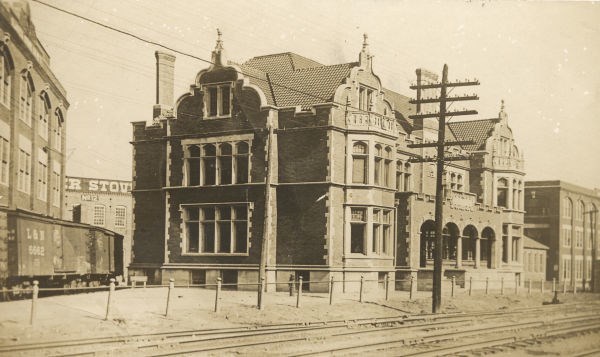
Shortly after the construction of these three iconic buildings, the Glazier Stove Company went bankrupt amidst a political and financial scandal involving Frank P. Glazier. Following the failure of the Glazier Stove Company many other businesses occupied the site and manufactured a variety of products including Flanders Manufacturing (motorcycles)(pictured below), Lewis Spring & Axle (Hollier Eight automobiles) (pictured below), Grant & Wood Manufacturing Company (Liberty airplane engines), Chelsea Foundry & Machine Company, Peninsular Furnace Company, Federal Screw Works (screws and machined parts), Rockwell-Standard Corporation – Spring Division (mechanical springs, wire forms, clips, small stampings, seat recliners, roof bows; and parts for automobiles, trucks, agricultural equipment, and appliances), Central Fiber Products (paper fleece twine, kraft and tissue cord, paper covered wire, paper filler and trimsticks for the automobile industry), Outdoor Fiber Products (The Paradome portable folding camping cabin), Chelsea Industries, Inc. (welded car seat assemblies using hydraulic machinery), and the Real Ale Company (beer).
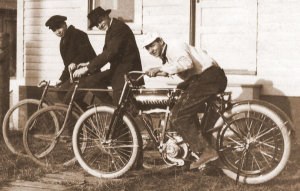
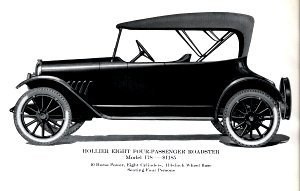
During World War II, 50 millimeter projectile casings, jacketed bullets, timer fuses and parts for anti-aircraft guns and tanks were produced on the site. Most of the 1,600 employees in Chelsea's war-converted factories were women. Federal Screw Works received production awards and citations from departments of the Army and Navy and twice received the Navy E award recognized by President Roosevelt.
 In 1998, Chelsea-area resident Ambassador Ronald Weiser, former US ambassador to Slovakia, (left) purchased the site for its unique architectural and historic significance. In 2001, McKinley, the company founded by Ambassador Weiser, embarked on a multi-million dollar renovation of the complex from an industrial site to a mixture of office, commercial, residential, and warehousing. The Welfare Building is in different ownership and is not part of the renovation project. It is primarily used for offices.
In 1998, Chelsea-area resident Ambassador Ronald Weiser, former US ambassador to Slovakia, (left) purchased the site for its unique architectural and historic significance. In 2001, McKinley, the company founded by Ambassador Weiser, embarked on a multi-million dollar renovation of the complex from an industrial site to a mixture of office, commercial, residential, and warehousing. The Welfare Building is in different ownership and is not part of the renovation project. It is primarily used for offices.
The significance of the Clocktower to the Chelsea area is highlighted by depictions of the Clocktower on Chelsea's water tower, the Chelsea City Seal, and the Chelsea Area Chamber of Commerce logo.
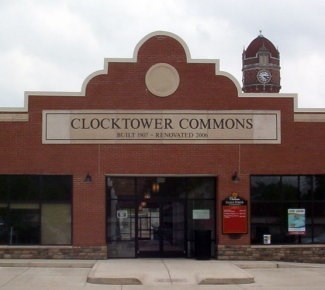

Permission to place this geocache within the Clocktower complex has been granted by McKinley.
Historical photographs and information courtesy of the Chelsea Historical Society.
